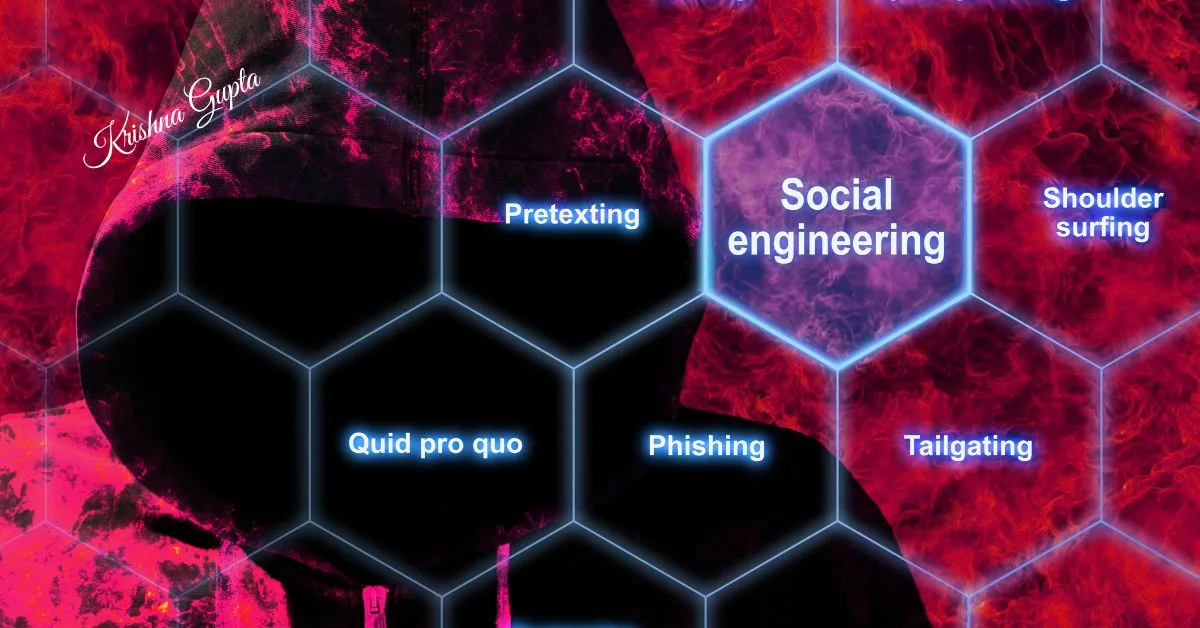Don’t Get Hooked: Top 10 Social Engineering Attacks Targeting MSMEs
Running a small or medium-sized business (MSME) is challenging enough without falling prey to online predators. But lurking in the digital shadows are social engineers, masters of manipulation who aim to steal your data, disrupt your operations, and drain your finances.
Today, we’re taking a deep dive into the ten most common social engineering attack methods specifically targeting MSMEs:
1. Phishing: Imagine an urgent email from “IT support” demanding an immediate password change. Phishing emails and texts use familiar branding and fake urgency to trick you into clicking malicious links or revealing sensitive information.
2. Spear Phishing: Think of it as personalised phishing. Attackers research your company and employees, crafting targeted emails that appear legitimate. One email to the CEO claiming a data breach, another to the accountant with a fake invoice payment request – these attacks are highly deceptive.
3. Vishing: Phone lines become the weapon! Convincing calls from seemingly trustworthy sources, like banks or suppliers, manipulate you into divulging financial details or granting remote access to your systems. Remember, legitimate companies rarely call for urgent information over the phone.
4. Smishing: Phishing gets texty! Malicious SMS messages with tempting deals or urgent warnings can trick you into clicking suspicious links or downloading malware hidden within. Be wary of unexpected texts, especially those offering quick profits.
5. Whaling: Big fish, big targets! CEOs and executives are in the crosshairs. Whaling attacks use sophisticated tactics like deepfakes or social manipulation to gain access to sensitive company data or financial resources.
6. Pharming: Imagine a fake website that looks eerily familiar. Pharming attacks direct you to cleverly disguised fraudulent websites, tricking you into entering your login credentials or financial information, which are then stolen. Always double-check website URLs before entering sensitive information.
7. Pretexting: It’s all about creating a believable story. Pretexting attackers invent scenarios where they need your help, often posing as colleagues, authorities, or customer service representatives, to gain your trust and extract sensitive information. Verify any unusual requests directly with the concerned person or department.
8. Deepfakes: Reality is no longer what it seems. Deepfakes use AI technology to create eerily realistic videos or audio recordings, often impersonating trusted individuals, to manipulate emotions and trick victims into revealing sensitive information or taking desired actions. Avoid unexpected video calls or voice messages, especially from high-level management.
9. Scareware: Fear is a powerful motivator. Scareware tactics use pop-up warnings and fake error messages to frighten you into downloading fake security software or paying for unnecessary services, often infecting your device with malware. Always rely on verified security solutions and never download software from suspicious sources.
10. Baiting: Curiosity can be a trap. Baiting attacks lure you with irresistible offers, free gifts, or exclusive content, often hidden behind malicious links or downloads, infecting your device or stealing your information as soon as you take the bait. Resist the urge to click on tempting offers, especially those from unknown sources.
Protect Your MSME, Secure Your Future:
By understanding these common tactics and implementing basic security measures like employee training, multi-factor authentication, and data encryption, you can build a robust defence against social engineering attacks. Remember, staying vigilant and informed is critical to safeguarding your business and its valuable assets.
Don’t let these deceptive methods hook your MSME. Fight back with knowledge and awareness, and confidently navigate the digital world! To message and learn more about how you could secure your risk – Join my Telegram Group – SecureRisk.
To Secure your risk – We offer Secure CEO as a Service customised for your business. It is tailor-made to your target clients, geographical location, and industry.
